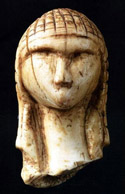Anthropology, Department of

Department of Anthropology: Faculty Publications
Document Type
Article
Date of this Version
2013
Citation
Digital Heritage International Congress (DigitalHeritage), 2013
Volume: 2
DOI: 10.1109/DigitalHeritage.2013.6744820
Publication Year: 2013 , Page(s): 519 - 522
Abstract
Since the onset of settlement pattern studies in the 1950s, landscape mapping projects have become an archaeological mainstay. Remote sensing technologies such as lidar, photogrammetry, and SAR (Synthetic Aperture Radar) steadily reveal new archaeological sites. For landscape archaeology, the detection and mapping of small architectural complexes and households offers important data to contextualize larger (often already known) sites and perform regional analyses. However, because the majority of sites remain unexcavated, analysis is limited, and yet Geographic Information Systems (GIS) and 3D Visualization are expanding the possible uses for older and newly-acquired data on unexcavated mounds. This paper describes a GIS approach to interpolate architectural data from maps of unexcavated mounds into 3D models useful for landscape archaeology. The case study is the ancient Maya city of Copan--today a UNESCO World Heritage Site in Honduras.
Included in
Archaeological Anthropology Commons, Digital Humanities Commons, Geographic Information Sciences Commons, Landscape Architecture Commons, Latin American Languages and Societies Commons, Urban Studies and Planning Commons


Comments
Copyright (c) 2013 IEEE. Used by permission